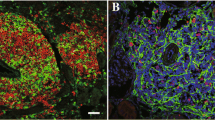Abstract
. Renal fibrosis is the final common pathway for many kidney lesions that lead to chronic progressive organ failure. The tubulointerstitial space occupies up to 90% of kidney volume, indicating that pathological changes in that space can not be without functional significance. By analogy to wound healing, renal fibrogenesis can be divided arbitrarily into three phases: induction, inflammatory, and post-inflammatory phases. The latter phase is of particular importance, since its length often exceeds what would be required for healing. The induction phase is characterized by the infiltration of the tubulointerstitial space by mononuclear inflammatory cells. This influx is mediated by proinflammatory cytokines and chemokines often secreted by activated tubular epithelial cells. Subsequently, these infiltrating mononuclear cells stimulate a heterogeneous group of resident fibroblasts and tubular epithelial cells to undergo phenotypic conversion into activated fibroblasts that secrete abundant extracellular matrix. Tubular epithelial cells contribute to this process through epithelial-mesenchymal transition. During the inflammatory phase these activated fibroblasts are stimulated to produce collagenous matrix mainly by cytokines, such as TGF-β1, EGF, ET-1, and FGF-2, which are secreted by inflammatory and injured somatic cells. Occasionally however, when inflammation subsides, the matrix synthesis in the post-inflammatory phase of renal fibrogenesis continues and may be more dependent on autocrine stimulation from resident renal cells such as remaining tubular epithelium. Eventually, the collagenous matrix of fibrogenesis destroys blood supply and the perimeter of viability for fibroblasts regresses to the point where scars become acellular.
Similar content being viewed by others
Author information
Authors and Affiliations
Additional information
Acknowledgements. This work has been made possible in part by a grant from the Deutsche Forschungsgemeinschaft (DFG) to F. Strutz (DFG Str 388/6–1) and NIH grants DK-46282 RO1 and HL-68121 to E. G. Neilson. We apologize to all authors whose work could not be cited due to space limitations.
Correspondence to: F. Strutz
Rights and permissions
About this article
Cite this article
Strutz, F., Neilson, E. New insights into mechanisms of fibrosis in immune renal injury. Springer Semin Immunopathol 24, 459–476 (2003). https://doi.org/10.1007/s00281-003-0123-5
Issue Date:
DOI: https://doi.org/10.1007/s00281-003-0123-5




